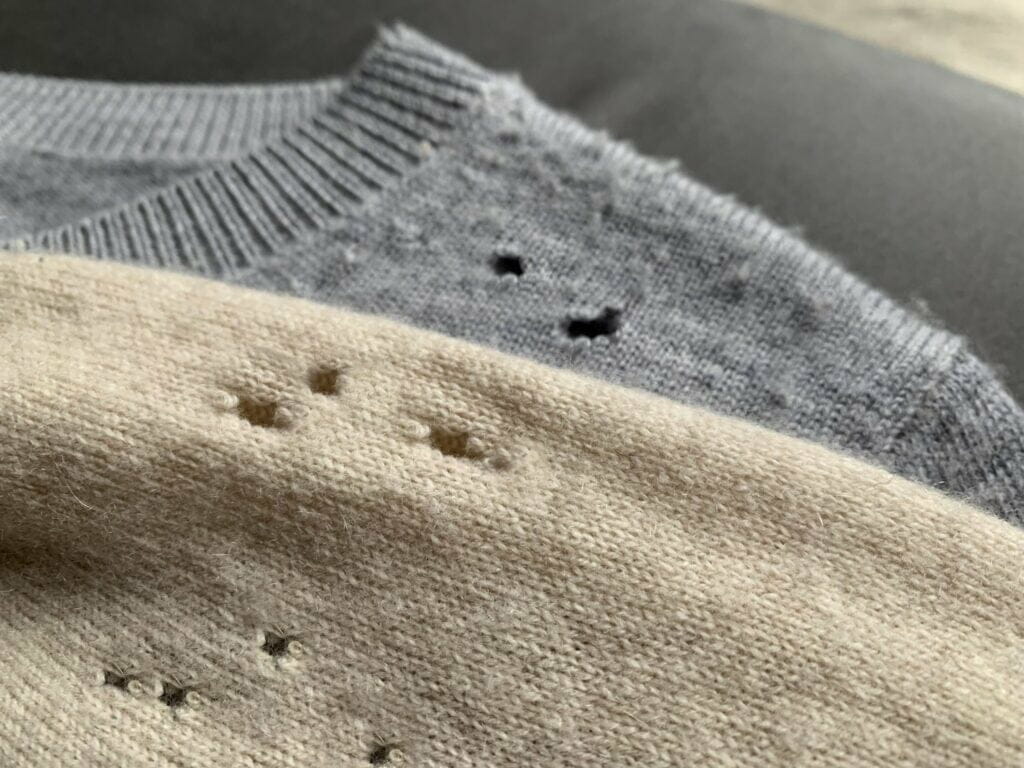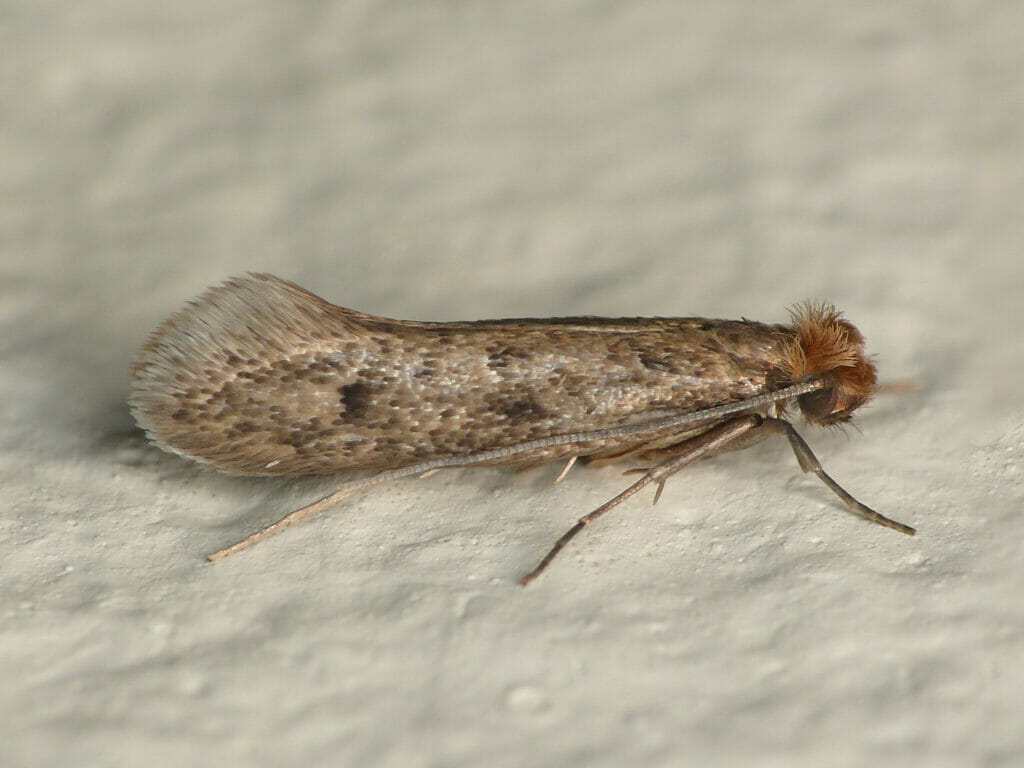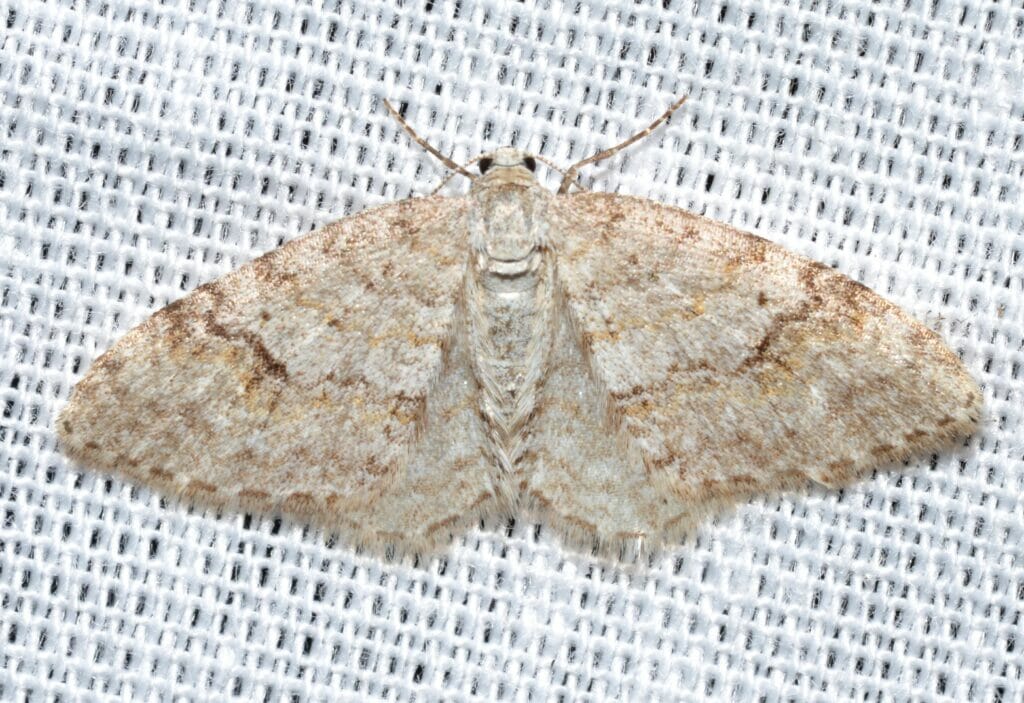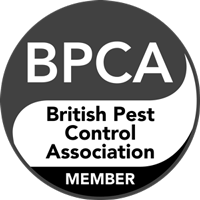Table of Contents
We’ve all had a moth in our home at some point, fluttering around your room and repeatedly headbutting the light source. But most people don’t realise the damage that a moth infestation can cause to your home. To solve this, we’ve put together our complete guide to getting rid of moths; including the signs for recognising an infestation, the different types of moths you might find, and the damages they can cause.
We know from experience just how challenging it can be to remove all signs of moths from your home; you need to ensure that all life stages are removed. If not, the problem will return.

Moth infestations can quickly get out of hand, so it’s vital to act promptly when you see the signs. As with all pest problems, there are DIY methods available, but the only way you can guarantee a moth-free home is to use the services of a pest control professional.
Integrum are a registered British Pest Control Association (BPCA) company with over 70 years of experience in the industry. Our highly qualified, skilled technicians provide moth control London services to all homes and businesses across the South East of England.
Signs of Moths in Your Home
Several telltale signs can signify the presence of a moth infestation, and if you’re reading this article, you may have already noticed one or two of these in your home!
- Holes in your clothes – Perhaps the most well-known sign of a moth; mysterious holes appearing in your clothing is a definite signal that you’ve got a moth problem. However, there is a common misconception that all moths eat clothing. Only the moth larvae create these holes, as this is the only stage of life where they can physically chew. They will chew on clothing to survive as they feed on the keratin protein found in the natural fibres.
- Moths flying out of cupboards – Some types of moths prefer the dark to the light and will make their home in dimly lit areas of your home, including cupboards and wardrobes. Upon opening the doors, you may disturb the moth(s), causing them to fly out suddenly. This is a relatively clear sign that you have moths in your home.
- Webs – It turns out spiders aren’t the only pests that cover your home in webs! Moth larvae can create spider-like webs that they leave around your house in areas they frequent.
- Damage to your soft furnishings – Clothes are not the only things that moths will chew through. Look out for damage on carpets, bedding, curtains, cushions – anything with a material like fabric. It may seem like the fabric is wearing away in places, but upon closer inspection, you will see it has been eaten.
Types of Moths
Moths are a diverse bunch; there are over 2,500 moth species in the UK alone! However, two more common types are the most likely to be invading your home and causing damage: the Clothes Moth and the Carpet Moth.
Clothes Moth
The clothes moth, whose scientific name is Tineola bisselliella, feed on keratin. This fibrous protein can be found in natural animal fibres, including silk, wool, furs, feathers and leather. These are all common materials used in clothing manufacturing, which is why these moths have earned themselves the nickname clothes moths.
The larvae of these moths will chew their way through whatever natural materials they can find, leaving behind irreparable damage to your favourite clothing as they go.
Clothes moths are small creatures, only measuring around 6mm in length on average. They have very narrow and slightly hairy wings with a wingspan of approximately 9-16mm, and their bodies are typically a beige, pale brown colour.

Moths, in general, are known for being attracted to light sources; however, not clothes moths! Unlike most moths clothes, moths prefer to be in dark areas, which is why wardrobes are the most common places you’ll find them. Not only are they dark spaces that are left undisturbed for most of the day, but they also contain a high volume of materials that provide the moths with an almost unlimited food source.
If you’re unfortunate enough to have a clothes moth in your home, then the problem needs to be dealt with sooner rather than later, as female moths can lay up to 200 eggs a year! Therefore, one moth can quickly turn into an infestation in no time at all.
Carpet Moth
Carpet moths, referred to scientifically as Trichophaga tapetzella, are similar to clothes moths in that they too eat away at fabrics found in your homes. However, while clothes moths tend to target clothes, carpet moths are more commonly found across the house, feeding on soft furnishings like curtains, bedding, and carpets – hence their name!
Carpet moths are slightly larger than their clothing-focused cousins, with an average 14-18mm wingspan. They are also darker in colour than the clothes moths and feature distinctive dark spots across their body – helping to distinguish the two different moth types found most commonly found in homes. Carpet moths also reproduce quickly like the clothes moths, with female carpet moths laying around 200 eggs a year.

Just like clothes moths, carpet moths also prefer to stay in the dark and remain undisturbed. Unfortunately, they also favour warm, humid environments, so it’s worth checking your carpets in areas close to radiators or pipes that get hot – paying close attention to skirting boards where they can easily hide.
Interestingly, the dye of carpets won’t deter these moths and can make it harder to see them; as they eat the carpet thread, their slightly translucent bodies will begin to look the same colour as your carpet, so they blend right in!
How Do Moths Get Into Your House?
Of course, moths may enter your home by simply flying in through an open window or door. However, it’s much more likely that they enter your property via a contaminated item. For example, you may have grabbed yourself a bargain at a second-hand store and unknowingly brought a moth infested sofa into your home.
How to Prevent Moths in Your Home
All it takes is one moth or one egg, and before you know it, you’ve got an infestation on your hands. Here are our tips for preventing moths’ access to your home:
- Wash your clothing before storing it away for long periods. For example, if you’re switching from a winter wardrobe back to your summer one, be sure to wash the winter items before placing them in your wardrobe. Washing will remove any moth eggs that may be lying dormant in your clothing, preventing an infestation from breaking out in your storage areas.
- If you wear clothes made of wool or fur, be sure to give them a brush before returning to your home. Moth eggs are somewhat sticky and can attach themselves to your clothing easily. So brush out such items to prevent bringing moths inside with you.
- If you have precious clothing items or items made from natural materials that moths will chew through, try storing these in sealed containers. Suitcases or vacuum pack bags are ideal for keeping the pests away from your clothes.
How to Get Rid of Moths?
While using the services of a pest control professional is always the best option, we know that some people may prefer taking the DIY approach. So we’ve put together a list of tips and tricks you can use to rid your home of moths:
- Hoover up – This applies more to carpet moths, surprisingly! If you’ve noticed signs of wear and suspect a moth infestation, your first step should be to hoover your home. You should be extremely thorough with this process, paying specific attention to areas where moths are likely to be: near skirting boards, around radiators, near warm pipes underground etc. The more thorough you are with this, the more likely it is to work. If you aren’t careful, you may leave behind some eggs that can easily cause another infestation. Ensure you dispose of the collected debris carefully and give the hoover a clean once you’ve finished.
- Get cleaning – To dispose of moth eggs effectively, you will need to clean your home from top to bottom. We recommend using a solution of vinegar and hot water and paying close attention to areas that moths will have frequented. Another tip is to use a carpet steamer, as this will help kill off any signs of moth life left behind in your upholstery.
- Wash your clothes – if you’ve noticed signs of moths in your wardrobe, you should bag up all items and wash them at high temperatures of 60°C or above to kill off any eggs that may be lying dormant. Make sure you bag them up before taking them from your wardrobe to the washing machine to prevent spreading the moth eggs from the clothing and wardrobe across the rest of your home.
- Use an insecticide – There are a wide range of insecticides on the market that will target moths. Apply this to all surfaces and carpets with signs of moths and leave it to do its magic. To completely remove moths from your house, you will need to kill them in all stages of life, which can be difficult with ready-to-use pesticides.
Moth Control
To avoid wasting money and potentially causing further damage to your property, we always recommend using the services of a pest control professional.
Integrum’s fully qualified pest control experts have years of experience and professional equipment, meaning they can guarantee you a moth-free home.
We know that each pest control problem is unique; simply call on 0204 566 5522 or email at [email protected] for a free quote with no obligation.
Integrum offers specialist treatments to cover all pest problems, including moth control services guaranteed to rid your home of clothes and carpet moths.
Our BPCA certified technicians provide their services across the South East of England, including Surrey and the whole of London.




